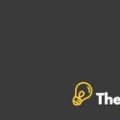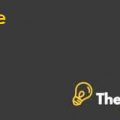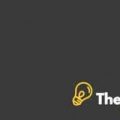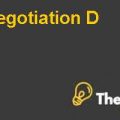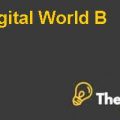WACC Case Study Solution
The WACC or the ‘Weightage Average Cost of Capital’ is a method of calculating a firm’s cost of capital where the total capital is broken down in terms of its components and weights are assigned to the components that make up the capital. Typically, a firm’s capital is made up of common stock, preferred stock, any other long-term debt and bonds, each of these are used for calculating the WACC and a weightage is assigned to each in terms of a percentage of the total capital. The total value of equity is made up of these different types of stocks and the total value of debt is taken from the total long term debt of a company including bonds.
This method of calculating the cost of capital gives an average rate of return which is the minimum rate of return after tax that each of a firm’s capital component must earn. The method of calculation is simple where the cost of each component of a firm’s capital is determined and then it is multiplied with the relevant proportion of that component to the total capital. The proportionate costs are then summed up. This method is important as it determines whether the shareholder’s wealth is being increased by a particular project or not. In Nike’s case, calculating the WACC would help in estimating whether the firm’s ventures are adding value to the shareholder’s wealth or whether they are just covering the costs. . In a broader prospect, the rate calculated through the WACC is used in calculating the Net Present Value in budgeting decisions. It should be noted though that the WACC is just one of the estimates of cost of equity and other models may present different pictures so it should not be used as the ultimate factor for justifying whether a project is worthwhile or not.
Cohen’s method of calculating the cost of capital is correct as per the specified method used for calculating this value as it has taken into account all the components of the formula which are needed in this calculation. Cohen has calculated the cost of debt to be 4.3% which has been calculated after adjusting for tax where the tax rate has been taken as 38% which includes the state tax of 3% as well. An average tax of 3% has been added to the statutory tax rate as well to make the rate more conservative.
For calculating the cost of equity, Cohen has used the CAPM model which is a popular method of calculating the price of an asset suggesting that her method has made use of the method ways of calculating both the cost of debt and the cost of equity. The risk free rate that Cohen has used is the current yield on the 20 year treasury bonds and since treasury bonds are considered a risk free investment, this would be a good estimate for CAPM. She took the average of Nike’s betas from 1996 to the present, so a good estimate for beta has also been calculated. Additionally she took the risk premium at 5.9% which is the average premium of treasury bonds so an average rate of a market benchmark has also been determined.
Even in terms of calculating the weightages, Cohen has considered the Nike’s segmentation. Since Nike has multiple business segments, the decision was difficult in terms of whether the cost of capital was to be single or multiple. Since 60% of Nike’s business is footwear and 30% of the revenue is generated from apparel and 3.6% of the revenue is contributed by sports accessories and 4.5% from Non-Nike brands, there are multiple cost avenues. In terms of a broader segmentation, only the Cole Haan Line is different while the rest of the products can be categorized under sports related businesses. Even the marketing and distribution channels for the apparel and footwear are the same so a single cost of capital makes more sense as compared to computing multiple costs of capital.
WACC Harvard Case Solution & Analysis
Since Nike’s capital has both debt and equity capital, Janna Cohen has been right in terms of calculating the Weighted Average Cost of Capital method (WACC) for which she has used 27% weightage for debt and 73% weightage for equity.
If you do not agree with Cohen’s analysis, calculate your own WACC for Nike and be prepared to justify your assumptions.
Although Cohen’s method of calculation and her justification for using them is accurate, it should be noted that Cohen’s calculation has an inaccuracy since she has calculated the debt percentage as 27% whereas it is actually 37%. Her analysis and method of calculation is accurate but there could be a slight difference in the estimates because of this error in her calculation. Excel sheet 4 shows the corrected calculation of WACC which shows that the cost of capital is just 7.7 % for Nike instead of the 8.4% calculated by Cohen.......................
This is just a sample partial work. Please place the order on the website to get your own originally done case solution.






